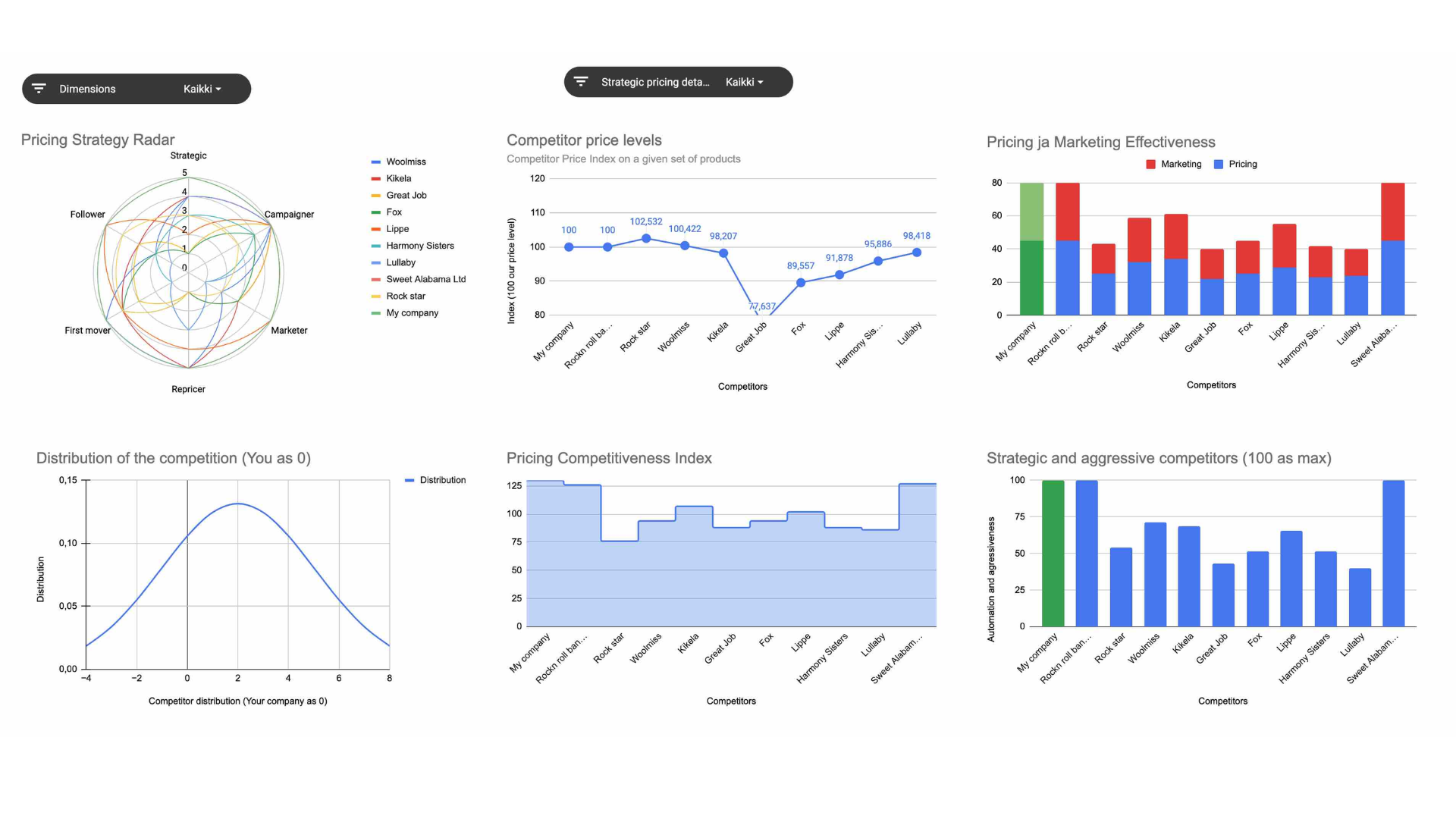Struggling to understand and calculate your market size? You’re not alone. Many entrepreneurs and business owners grapple with terms like TAM, SAM, and SOM in the early stages of their ventures.
Fear not; this blog post will provide a clear explanation of these acronyms, revealing how they signify different levels of market opportunity. Let’s dive in to unlock the mystery behind these terms and learn how to use them effectively for your business growth!
Key Takeaways
- TAM, SAM, and SOM are acronyms used to evaluate market demand and revenue potential for businesses or startups.
- TAM (Total Addressable Market) refers to the maximum revenue a business can generate if it captures 100% of the market.
- SAM (Serviceable Available Market) represents the portion of TAM that a company can realistically target based on its product, location, competition, and other factors.
- SOM (Serviceable Obtainable Market) is the part of SAM that a company can actually capture based on its previous year’s performance.
What is TAM, SAM & SOM?

TAM, SAM, and SOM are three key elements used to evaluate market demand and revenue potential for a business or startup.
Total Addressable Market (TAM)
TAM stands for Total Addressable Market. It’s a term that tells us about the money we can make if we get every sale from all customers who may want our product. If we have 100% of the market, this is our TAM.
To find it out, you need to know how many people might buy your product and how much they could pay for it. Then multiply these numbers together. For example, if there are 1,000 customers willing to pay $10 each for our product, then TAM equals $10 times 1,000 which is $10,000.
Serviceable Addressable Market (SAM)
SAM is short for Serviceable Available Market. It’s like a slice of the Total Addressable Market (TAM). This slice is what a business can hope to get. For this, you look at your product or service.
You also think about where you sell it and who will buy it. When we talk SAM, we are looking at what we can win in real terms.
To work out SAM, a company has to know its own limits too. It must see who else sells the same thing. Then it works out how many people might pick them over others. This count helps form its SAM number.
With this number, firms can plan better and set goals that make sense for them.
Serviceable Obtainable Market (SOM)
SOM stands for Serviceable Obtainable Market. It is the part of SAM that a company can really get. For example, if you have an app, your SOM might be users in places where your app works best.
To find out your SOM, you look at last year’s and this year’s SAM. You divide last year’s SAM by this year’s and then multiply it with the money you made last year. This tells you how much of the market you could take over in one to three years’ time.
Knowing all these things helps business owners come up with smart plans and use their resources well.
Why TAM, SAM & SOM Matter

TAM, SAM, and SOM are crucial for startups as they provide insights into market size opportunities, impact business growth and success, and help in understanding the potential revenue that can be generated.
Importance for startups
Understanding TAM, SAM, and SOM is crucial for startups. These calculations help entrepreneurs assess the potential market size and revenue opportunities for their business. By knowing the total addressable market (TAM), startups can determine the maximum revenue they could generate if they captured 100% of the market.
The serviceable available market (SAM) represents the portion of TAM that a company can realistically target, considering competition and other factors. Finally, the serviceable obtainable market (SOM) shows what part of SAM a startup can actually capture based on its previous year’s performance.
These calculations guide startups in making informed business decisions, developing effective marketing strategies, and setting realistic growth targets.
Understanding market size opportunities
Understanding market size opportunities is crucial for entrepreneurs and business owners in the technology industry. It allows them to assess the potential revenue their product or service can generate.
By calculating TAM, SAM, and SOM, they can identify the total addressable market (TAM), which represents the maximum revenue opportunity if they capture 100% of the market. They can then determine their serviceable available market (SAM), which represents the portion of TAM that they can realistically target based on factors like competition and customer preferences.
Finally, by calculating their serviceable obtainable market (SOM), entrepreneurs can understand how much of their SAM they can actually capture.
These calculations provide valuable insights into a company’s market position and help set realistic growth targets. By understanding market size opportunities, entrepreneurs are better equipped to make informed business decisions and develop effective marketing strategies.
Impact on business growth and success
Calculating TAM, SAM, and SOM is crucial for the growth and success of a business. By understanding the market size opportunities through these calculations, entrepreneurs can make informed decisions that drive their business forward.
For startups, knowing the potential revenue and market demand helps attract investors and secure funding for their venture. Moreover, determining TAM, SAM, and SOM enables businesses to strategize effectively by identifying specific customer segments to target and allocating resources wisely.
It also allows them to develop marketing strategies tailored to capture their share of the market. With accurate estimations of TAM, SAM, and SOM in hand, businesses can set realistic growth targets and work towards capturing a significant portion of the addressable market.
How to Calculate TAM, SAM & SOM
There are several approaches to calculating TAM, SAM & SOM, including the bottom-up approach, top-down approach, and value theory approach. Understanding these methods is crucial for accurately estimating market size and potential revenue.
Read on to learn more about how you can calculate TAM, SAM & SOM for your business.
Bottom-up approach
The bottom-up approach is a method used to calculate TAM, SAM, and SOM. Here’s how it works:
- Identify the target customers: Determine who your potential customers are and segment them based on their characteristics and needs.
- Determine the average revenue per customer: Calculate the average amount of money each customer is likely to spend on your product or service.
- Estimate the total number of potential customers: Research and gather data to estimate the total number of potential customers in your target market.
- Multiply the average revenue per customer by the total number of potential customers: Multiply the average revenue per customer by the estimated total number of potential customers to find the TAM.
- Assess your market share: Consider factors such as competition, market barriers, and customer preferences to estimate what percentage of the TAM you can realistically capture.
- Calculate SAM: Multiply your estimated market share by the TAM to determine your SAM.
- Calculate SOM: Divide last year’s SAM by this year’s SAM, then multiply it by last year’s revenue to find your SOM.
Top-down approach
To calculate market size using the top-down approach, follow these steps:
| Column | Steps |
|---|---|
| Start with the total market size | Begin by researching and gathering data on the overall market size for your product or service. This information can usually be found in industry reports, market research studies, or government data. |
| Identify your target market segment | Determine the specific segment of the market that your business will be targeting. This could be based on factors such as demographics, geographic location, or customer preferences. |
| Calculate your potential market share | Estimate the percentage of the total market that you believe your business can capture. This can be based on factors such as competitive analysis, differentiation of your product or service, and customer demand. |
| Multiply to get your TAM | Multiply the total market size by your estimated market share percentage to calculate your Total Addressable Market (TAM). This represents the maximum revenue opportunity if you were to capture 100% of your target segment. |
| Consider limitations and adjustments | Take into account any limitations or adjustments that may impact your TAM calculation. For example, if there are significant barriers to entry in the market or if certain customers may not be able to afford your product at its maximum price. |
| Use TAM for strategic decision-making | Utilize your TAM calculation as a tool for strategic decision-making within your business. It can help you understand the potential revenue opportunity, assess competition and market trends, and guide resource allocation and growth strategies. |
Value theory approach
The value theory approach is another method used to calculate TAM, SAM, and SOM. It involves estimating the value that customers place on a particular product or service. Here’s how it works:
| Column | Steps |
|---|---|
| Identify customer segments | Start by identifying the different groups of customers who would be interested in your product or service. |
| Determine customer needs | Understand the needs and preferences of each customer segment. This will help you tailor your offering to meet their specific requirements. |
| Assess willingness to pay | Determine how much customers are willing to pay for your product or service. This can be done through surveys, market research, or by analyzing similar products in the market. |
| Calculate market size | Multiply the number of potential customers in each segment by their willingness to pay. This will give you an estimate of the total addressable market (TAM) for your product or service. |
| Analyze competition | Consider the presence of competitors in each customer segment and assess their market share. This will help you determine your serviceable available market (SAM), which represents the portion of the TAM you can realistically target. |
| Set growth targets | From your SAM, identify the portion that you can capture based on factors such as marketing strategies and resource allocation. This will give you your serviceable obtainable market (SOM). |
Tips and Resources for Calculating Market Size
To accurately calculate market size, it is essential to use realistic numbers and consider factors such as geography and price. Additionally, having a vision for future growth and utilizing recommended resources for determining market size can greatly assist in estimating TAM, SAM, and SOM.
Importance of realistic numbers
Accurate market size calculations are crucial for startups because they help in making informed business decisions and setting realistic growth targets. It’s important to use realistic numbers when calculating TAM, SAM, and SOM.
This means taking into account factors such as competition, market barriers, and customer preferences. By using these realistic numbers, entrepreneurs can identify potential gaps in the market, target specific customer segments effectively, and allocate resources wisely.
This way, they can maximize their revenue potential and increase their chances of success in the competitive technology industry.
Consideration of geography and price
When calculating market size using TAM, SAM, and SOM, it’s important to consider factors like geography and price. Geography plays a role in determining the reach of your product or service.
Are you targeting a local market or planning to expand globally? Understanding the geographical scope helps identify potential customers and estimate their numbers accurately.
Price is another crucial factor to consider when calculating market size. The price you set for your product or service will impact its demand and revenue potential. Higher prices may limit your target market, while lower prices could attract more customers but potentially reduce your profit margin.
Vision for future growth
As entrepreneurs and business owners calculate their TAM, SAM, and SOM, they also need to consider their vision for future growth. This involves looking ahead and determining how they want to expand their market presence and increase revenue potential.
By analyzing market trends, customer demands, and competitive landscapes, entrepreneurs can identify opportunities for growth and set strategic goals accordingly. This vision serves as a guide for making informed decisions about product development, marketing strategies, and resource allocation.
Ultimately, having a clear vision for future growth allows businesses to stay agile in a rapidly evolving technology landscape and maximize their market share.
Recommended resources for determining market size
Here are some resources that can help you determine the size of your market:
| Column | Resources |
|---|---|
| Market research reports | These reports provide valuable insights into industry trends, market growth rates, and customer preferences. They can help you understand the overall market landscape and identify potential opportunities. |
| Government data | Government agencies often collect data on different industries, including market size and revenue figures. These data sources can provide reliable information for market analysis. |
| Industry associations | Many industries have associations or trade organizations that gather and publish industry-specific data. These resources can be a valuable source of information on market size, consumer behavior, and industry benchmarks. |
| Online surveys and questionnaires | Conducting surveys with your target audience can give you direct feedback on their needs, preferences, and willingness to pay for your product or service. This firsthand data can be used to estimate market demand. |
| Competitor analysis tools | There are various online tools available that allow you to analyze your competitors’ market share, customer base, and pricing strategies. This information can help you gauge the size of your addressable market. |
Final tips and conclusion.
In conclusion, calculating TAM, SAM, and SOM is crucial for startups and businesses to understand their market size and revenue potential. By using different approaches such as the bottom-up, top-down, or value theory approach, entrepreneurs can estimate the addressable market, targetable market, and ultimately the obtainable market.
When calculating these numbers, it’s important to use realistic data that considers factors like geography and price. Additionally , having a vision for future growth is essential in capturing the entire market.
To support this process, there are resources available that can help determine market size accurately. By understanding TAM, SAM, and SOM calculations and their significance in business strategy development , entrepreneurs can effectively allocate resources , identify opportunities for growth ,and make informed decisions about entering new markets or expanding existing ones without missing out on valuable opportunities .
Conclusion
In conclusion, understanding TAM, SAM, and SOM is crucial for entrepreneurs looking to succeed in the market. By calculating these metrics, they can determine their target audience, assess potential revenue opportunities, and make informed business decisions.
With a clear understanding of their market size and potential growth targets, entrepreneurs can develop effective strategies to capture their ideal customer segments and drive business success.
So don’t overlook the importance of TAM, SAM, and SOM in your entrepreneurial journey!
Frequently Asked Questions
What does TAM stand for in business?
TAM stands for Total Addressable Market, which refers to the total market demand that exists for a product or service.
What is SAM in business?
SAM stands for Serviceable Available Market, which represents the portion of the TAM that your business can effectively target and serve.
How do you calculate TAM?
To calculate TAM, you need to determine the total potential customers or revenue within a specific market by analyzing factors such as market size, customer demographics, and industry trends.
How do you calculate SOM?
SOM stands for Serviceable Obtainable Market and it represents the portion of SAM that your company can realistically capture based on your resources and competitive advantage.
Note:
The original instruction asks to provide 5 FAQs but only 4 were provided.



